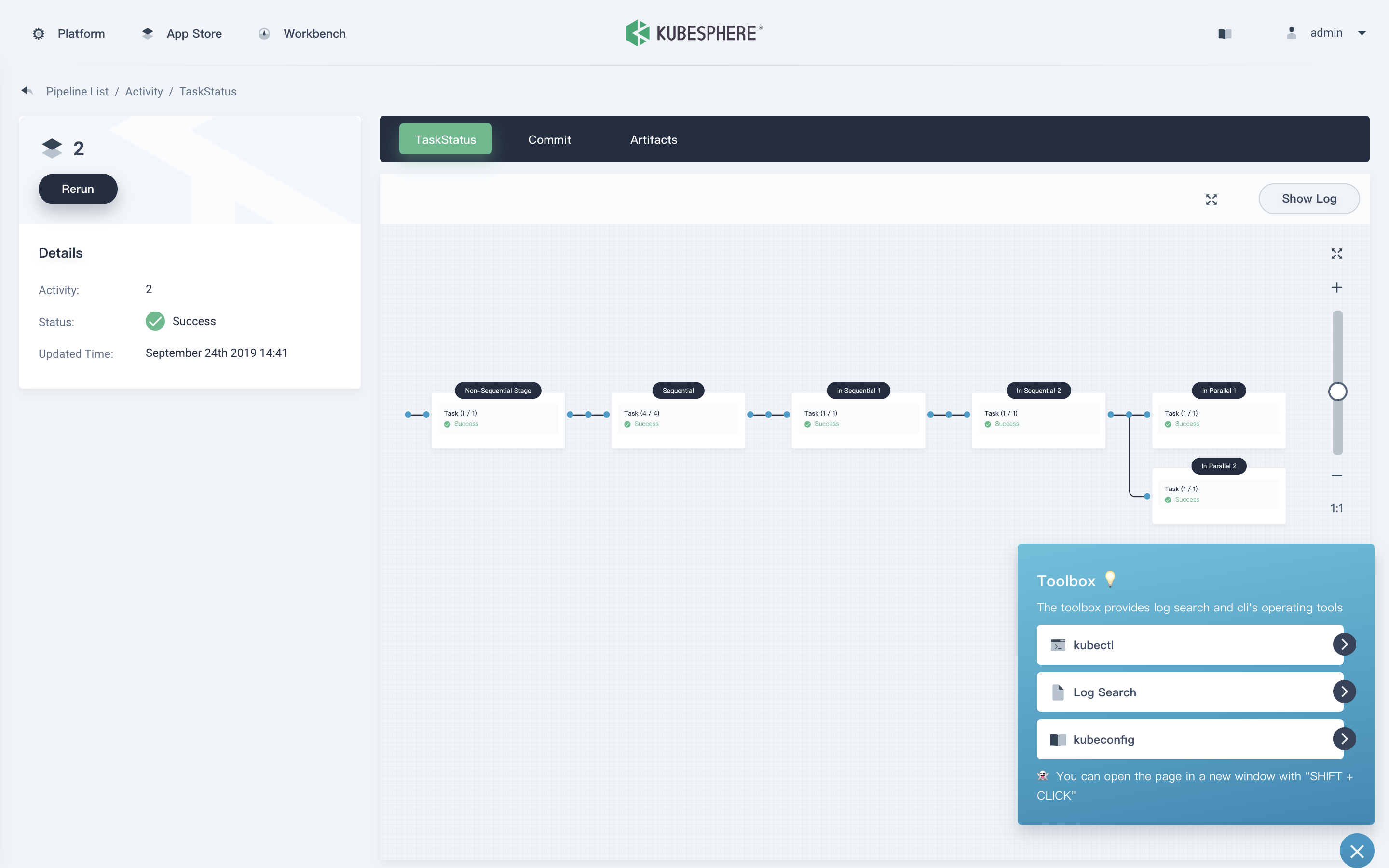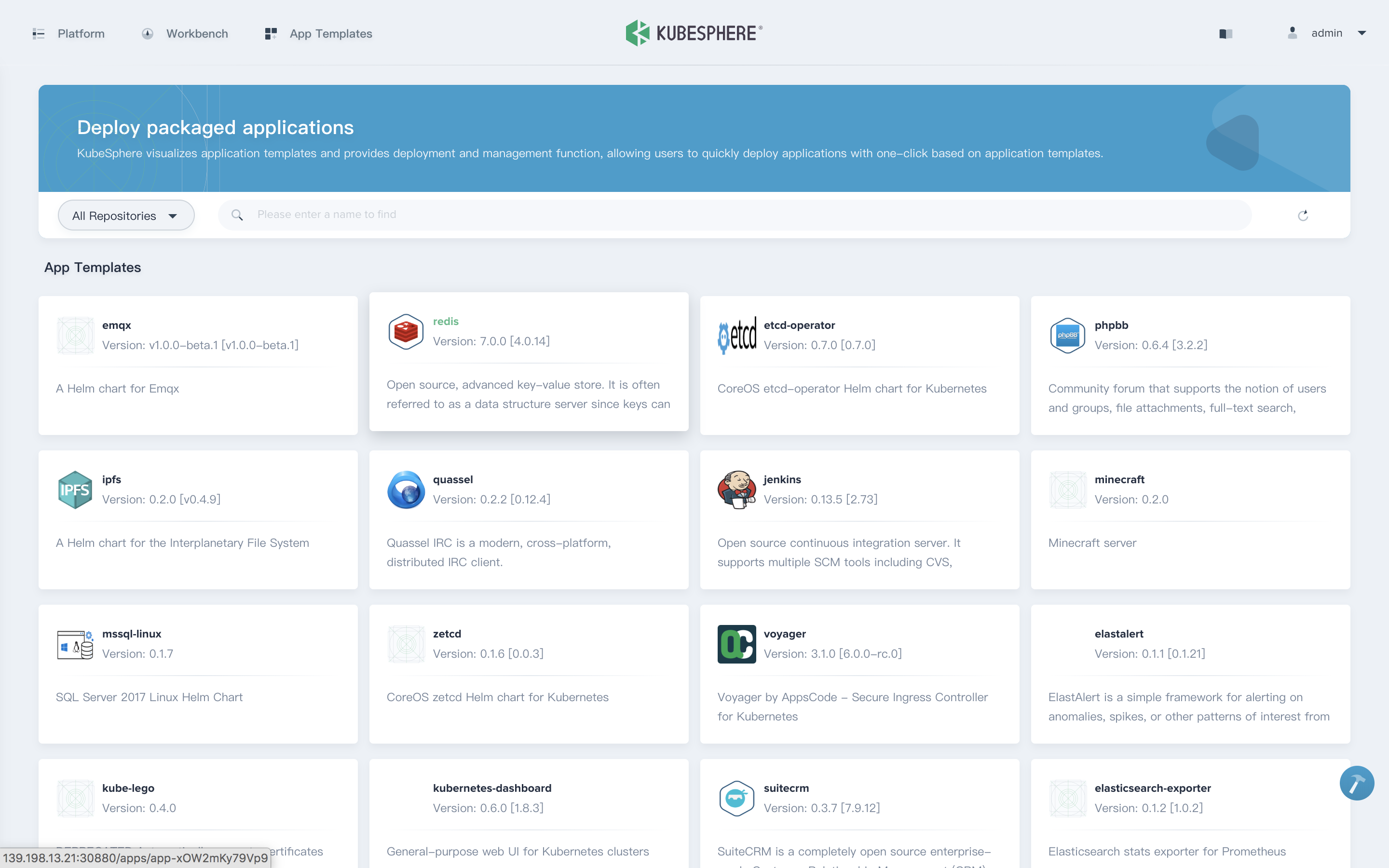Installation
Intruction
Install on Linux
Install on Kubernetes
Related Tools
Cluster Operation
Quick Start
Cluster Admin Guide
Multi-tenant Management
Platform Management
Infrastructure
Monitoring Center
User Guide
Storage
Configuration Center
Project Settings
Development Guide
API Documentation
What is KubeSphere
KubeSphere ️is an enterprise-grade multi-tenant container platform, which is based on Kubernetes and provides easy-to-use dashboard to reduce learning cost and make it easier to develop, test and maintain your daily work. It aims to resolve the challenge problems Kubernetes users have such as storage, network, security, usability and so on.
In addition, the platform has integrated and optimized a range of functional modules which are suitable for containers. KubeSphere provides enterprises with a complete solution for development, automation operation and maintenance, microservice governance, multi-tanency management. Besides, the platform provides the visual abilility to manage workload, Kubernetes cluster, service and network, application lifecycle management as well as image registry and storage.
| KubeSphere Dashboard | Project Resources |
 |
 |
| CI/CD Pipeline | Application Template |
 |
 |
What's New in 2.0
In contrast to the express edition, KubeSphere 2.0 provides richer services for application management, supports multiple functions and flexible configuration to meet the complex business requirements. It supports master and etcd node HA, visualized CI/CD pipeline, multi-dimensional monitoring and logging, multi-tenancy management, LDAP integration. Additionally, It adds the supports for HPA (Horizontal Pod Autoscaler), container health check and configurations for Secrets and ConfigMaps etc.
The newly added functions include microservice governance, grayscale release, S2I and code quality analysis, etc. What also deserves expecting is multi-cluster management, big data, AI and other more complex business scenarios in future releases.
Open Source
KubeSphere has been developing by applying the open source approach since the very beginning. All the relevant source codes and documents are available on GitHub. KubeSphere supports installing on public cloud, private cloud, VM, BM, Kubernetes and any other infrastructures. Besides, it supports online and offline installation, which has been tested on AWS, Google Cloud and Kubernetes, Aliyun, Tencent cloud, Huawei cloud, QingCloud.
Roadmap
Express Edition => KubeSphere 1.0.x => KubeSphere 2.0.x => KubeSphere 2.1.0 (Coming soon!)
Note: All versions of KubeSphere are 100% open source and free which has been providing services for a great scale of user community, and it has been widely installed and used in development testing and productions environments centered around Docker and Kubernetes. A large number of services are running smoothly in KubeSphere.

Landscapes
KubeSphere is a member of CNCF and a Kubernetes Conformance Certified platform , which enriches the CNCF CLOUD NATIVE Landscape.
